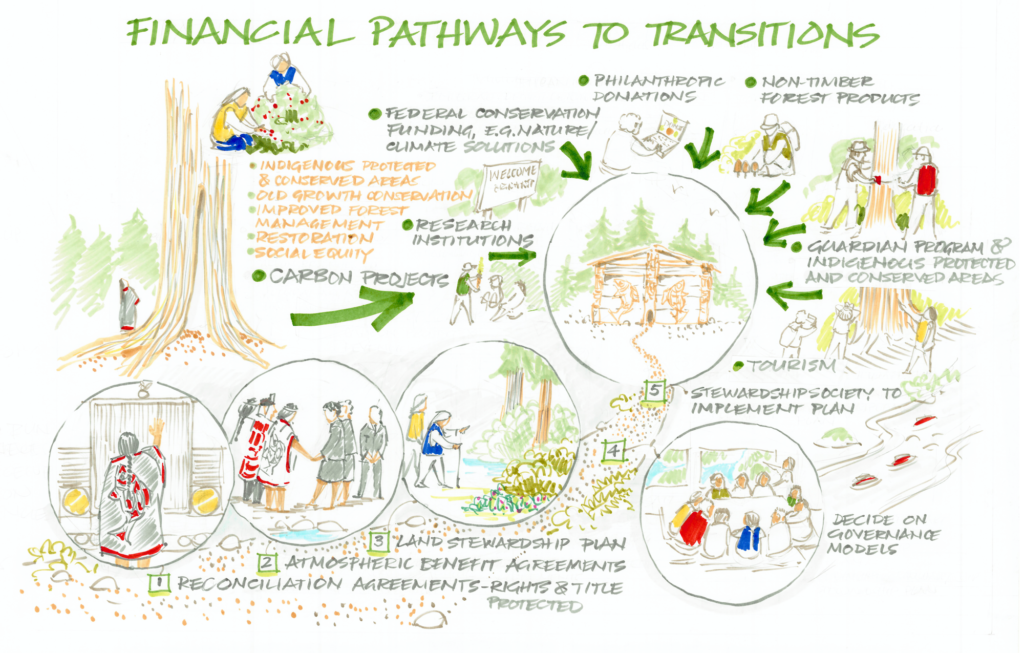What are the pathways to protection and stewardship of old growth forests that are respectful to First Nations rights and title and rural communities while providing feasible economic options to extractive industries?
Who is this site for?
This is a platform for anyone interested in economic alternatives to old growth logging, the steps of how to get there and what our respective roles can be in that transformation as citizens, voters and funders.
This website maps pathways that set out the legal agreements and institutions that are needed to access a diversity of funding streams. In the short term, money is needed to buy out extractive industries and alleviate debt. In the long term, money is needed to support the social and cultural programs of communities and their livelihoods restoring and maintaining the health of the forests.
How to read this site
Background
An overview of the problem with our current laws and economics and the rationale for the proposed way forward.
Funding Streams
Seven funding streams have been used by First Nation communities in various combinations.
Steps
The common steps required to attract and secure these funding streams based on case studies.
Who are we?
This website was developed by a group of concerned citizens—elders, foresters, biologists, lawyers, economists, policy analysts, donors, tourism operators, forest defenders and artists—who see the need to identify alternatives to old growth logging. We explored options for forest conservation and stewardship in BC that respects First Nations’ rights and title and places rural communities at the heart of the solution. Learn more about us.

